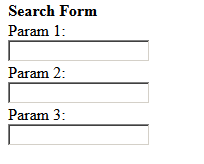வெற்றித் தோற்காமல் இருப்பதில் இல்லை; தவறுகளைத் திருப்பிச்செய்யாமல் இருப்பதில் இருக்கிறது
தொட்டனைத் தூறும் மணற்கேணி மாந்தர்க்குக்
கற்றனைத் தூறும் அறிவு
ஆமை புகுந்த வீடு உருப்படாது??
கல்லாமை,உண்மை பேசாமை,பெரியோர் பேணாமை,சுற்றம் சேர்க்காமை,அன்பு செலுத்தாமை போன்ற ஆமைகள் புகுந்தால் அந்த வீடு முன்னேறுவதற்கு வாய்ப்பே இல்லாமல் போய்விடும்.எனவே, இந்த இல்லாமைகள் அகற்றி வாழ்க்கையில் இன்புற வேண்டும்
ஆயிரம் முறை பொய் சொல்லி கூட ஒரு கல்யாணம் பண்ணலாம்.
ஆயிரம் பொய் சொல்லியாவது ஒரு கல்யாணம் பண்ணலாம் என்பதல்ல. ஆயிரம் முறை போய் சொல்லி ஒரு கல்யாணம் பண்ணலாம்என்பதாகும். அதாவது, நம் உறவினர்கள், நண்பர்கள் ஆகியோருடன் நாம் பகைமை கொண்டு நம் வீட்டில் நடக்கும் கல்யாணம் போன்ற சுபதினங்களில் நாம் அழைக்காமல் இருப்போம். ஆனால், அவர்களை விட்டுவிடாமல் ஆயிரம் முறை போய் சொல்லியாவது அவர்களை அழைத்து நம் வீட்டில் திருமணம் நடத்தவேண்டும் என்பதாகும். அப்படி நல்ல நோக்கத்திற்காக சொல்லப்பட்ட பழமொழிதான் பின்னாளில் மருவி அல்லது மாறி இப்போது உள்ளதுபோல ஆகிவிட்டது.
அடியாத மாடு படியாது
உண்மை பொருள் என்னவென்றால் மாட்டின் கால்களுக்கு லாடம் அடித்தால் தான் அதனால் கடுமையான வேலைகளை (உழுதல் போன்ற ) செய்ய முடியும் என்பது தான்.
கல் தோன்றா மன் தோன்றாக் காலத்தே
(கல்) கல்வி அறிவு தோன்றாத (மன்) மன்னராட்சி ஏற்படுவதற்கு முன்பாகவே, (வாளோடு) வீரத்தோடு தோன்றிய முதல் இனம் தமிழினம் என்பது இன்று கல் தோன்றா மண் தோன்றாக் காலத்தே வாளொடு முன் தோன்றிய மூத்தகுடி என்று, கல்லும் மண்ணும் தோன்றாத காலத்திலேயே (பூமி உருவாவதற்கு முன்பே) தமிழினம் உருவாகி விட்டதாக அர்த்தப் படுத்தப் படுகின்றது.
ஆறிலும் சாவு நூறிலும் சாவு
மகாபாரதத்தில் கர்ணனின் தாய் குந்திதேவி பாண்டவர்களுடன் கர்ணனை சேர்ந்து கொள்ளுமாறு கேட்கின்றாள். அப்போது தான் பாண்டவர்களுடன் சேர்ந்து ஆறாவதாக வந்தாலும் தனக்கு சாவு நிச்சயம். கொளரவர்கள் நூறு பேருடன் சேர்ந்திருந்தாலும் சாவு நிச்சயம். எனவே செய்நன்றிக் கடனுக்காக தான் கௌரவர்களுடனேயே இருந்து விடப் போவதாக கர்ணன் கூறுகின்றான். அதாவது ஐந்து பேருடன் ஆறாவதாகச் சேர்ந்தாலும் சாவுதான். நூறு பேர் கௌரவர்களுடன் இருந்தாலும் சாவுதான் என்பதுதான் அது. ஆனால் ஆறிலும் சாவு நூறிலும் சாவு என்பது இன்று வயதைக் குறிப்பதாக அர்த்தப்பட்டு விட்டது.
நாயைக் கண்டால் கல்லைக் காணோம்; கல்லைக் கண்டால் நாயைக் காணோம்.
பண்டைக்காலத்தில் அற்புத சிற்பங்கள் வடிக்கப் பட்டன. மாமல்லபுரம், தஞ்சை, காஞ்சி சிற்பங்கள் இதற்கு எடுத்துக் காட்டாக விளங்கின. இங்கே ஒரு சிற்பி நாயின் உருவத்தை கல்லில் சிற்பமாக வடித்திருந்தான். அந்த சிற்பத்தை ஒருவன் மிகவும் ரசித்தான். அந்த சுவைஞனைச் சிற்பி கேட்டான் “என் சிற்பம் எப்படி? என்று. அதற்குச் சுவைஞன் சொன்ன பதில் ‘நாயைக் கண்டால் கல்லைக் காணோம்; கல்லைக் கண்டால் நாயைக் காணோம்’ என்பதாக இருந்தது. அதாவது அதில் நாயைப் பார்த்தால் கல் தெரியவில்லை. கல்லைப் பார்த்தால் நாய் தெரியவில்லை.
பசி வந்திட பத்தும் பறந்து போகும்
அறிவுடைமை, இன்சொல், ஈகை, தவம், காதல், தானம், தொழில், கல்வி, குலப்பெருமை, மானம் ஆகிய பத்து குணங்களும் பசி என்று வந்து விட்டால் பறந்து போகும் என்பது உண்மை.
ஊரான் பிள்ளையை ஊட்டி வளர்த்தால் தன் பிள்ளை தானே வளரும்.
ஒருவனின் மனைவி கர்ப்பமாக இருக்கும் போது (என்னதான் அவன் மனைவியாக இருந்தாலும் அவள் இன்னொருவன் அதாவது ஊரான் பிள்ளைதானே) அவளை நன்றாக கவனித்து கொண்டால் , அவளின் வயிற்றில் வளரும் தன்பிள்ளை தானாக வளரும் என்பதாகும்.
